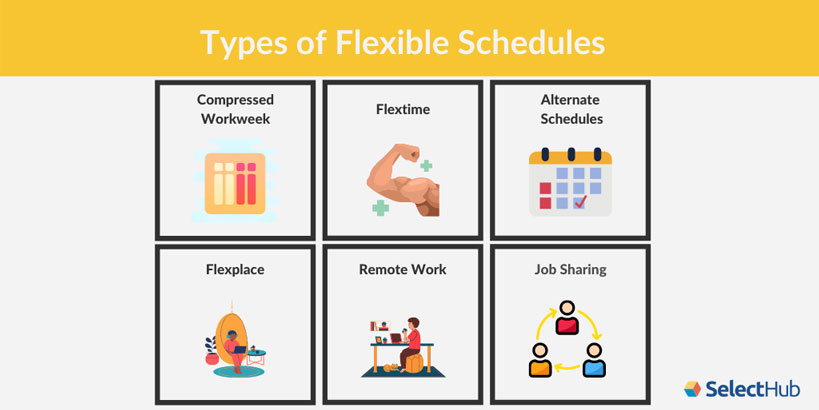Are you tired of the traditional 9 to 5 work schedule? Do you feel trapped in an office cubicle, daydreaming about more flexible work arrangements? If so, you’re not alone. The desire for a better work-life balance has become a common aspiration among many professionals. Fortunately, companies are starting to recognize the importance of flexibility and are offering options like flextime and telecommuting to help employees customize their work schedule.
Flextime, as the name suggests, allows employees to have more control over their working hours. Instead of being tied to a fixed schedule, flextime allows individuals to adjust their start and end times within a predetermined range. For example, some companies may require employees to be present between core hours (e.g., 10 am to 3 pm) but allow them to come in earlier or leave later as long as they fulfill their weekly hours.
I have personally experienced the benefits of flextime, and it has completely transformed the way I approach work. As a morning person, I used to struggle to be productive during the standard 9 am start time. The flexibility to start my day earlier allows me to utilize my most productive hours effectively. Additionally, flextime has given me the opportunity to avoid rush hour traffic, reducing stress and improving my overall work experience.
Telecommuting, on the other hand, offers the freedom to work remotely either part-time or full-time. This arrangement allows employees to complete their tasks from home or any location with an internet connection. Advances in technology, such as video conferencing and cloud-based collaboration tools, have made remote work more viable than ever before.
When I first began telecommuting, I was skeptical about whether I would be able to stay focused and productive without the structure of an office environment. However, I quickly discovered that working from home allowed me to create an environment that truly catered to my needs. From setting up a comfortable workspace to eliminating distractions, I found that telecommuting not only increased my productivity but also improved my overall job satisfaction.
Both flextime and telecommuting offer numerous advantages for employees. One significant benefit is the ability to achieve a better work-life balance. With flextime, you have the flexibility to mold your schedule around personal commitments and loved ones. Whether it’s attending a school event, going to a medical appointment, or simply having the freedom to enjoy a leisurely lunch break, flextime allows you to prioritize your personal life without sacrificing work responsibilities.
Similarly, telecommuting provides the flexibility to take care of personal matters while still meeting work obligations. Imagine eliminating the time spent commuting to and from the office each day. With telecommuting, you can use that time for other activities, whether it’s spending quality time with family, pursuing a hobby, or simply enjoying a few moments of relaxation. By reclaiming this lost time, telecommuting empowers individuals to live a more well-rounded and fulfilling life.
Moreover, both work arrangements offer advantages to employers as well. Studies have found that companies that offer flextime and telecommuting experience higher employee satisfaction and retention rates. By accommodating employees’ needs for flexibility, employers are able to attract top talent and nurture a loyal and dedicated workforce.
Furthermore, flextime and telecommuting can lead to increased productivity. When employees have the autonomy to set their own schedule or work in an environment that suits them best, they are more likely to be motivated and engaged. This, in turn, leads to higher levels of productivity and efficiency. Additionally, by reducing commuting time and office distractions, telecommuting can provide uninterrupted periods of focused work, resulting in improved output.
Of course, flextime and telecommuting do come with their challenges. Effective communication and collaboration become even more crucial when teams are working on different schedules or in different locations. Employers must establish clear guidelines and expectations to ensure smooth coordination and maintain a sense of unity within the team.
Furthermore, both employees and employers must be aware of the potential blurring of boundaries between work and personal life. With flexible work arrangements, it can be tempting to work longer hours or be constantly available. Both employees and employers must actively work to establish boundaries and encourage a healthy work-life integration to prevent burnout and maintain overall well-being.
In conclusion, flextime and telecommuting present unique opportunities for individuals to customize their work schedule and enhance their work-life balance. These arrangements provide the flexibility and freedom to manage personal responsibilities while still meeting work obligations. By embracing these options, both employees and employers can reap the benefits of increased satisfaction, productivity, and overall well-being. So, if you find yourself yearning for a more flexible work arrangement, don’t hesitate to discuss the possibilities with your employer. It could be the game-changer you’ve been waiting for in your professional life.
